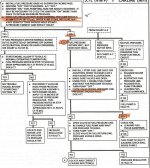Dog House
Well-known member
Having more trouble with my 89. Finally got it running good enough to drive it to work 1 time. Check engine light came on, checked codes when I got home and code 32 was present again and a lean exhaust as well. I cleared the codes and went in the house.
Two days latter went to go to work and the car would barely start much less run. Checked the fuel pressure and it went up to 48 and dropped to 15 within 30 seconds with a new FPR.
Did the procedure in the FSM pinching of the feed and return lines and had leak down pinching the feed line and when I pinched off the return line the pressure shot to around 65 and held at 60 according to the FSM it is a bad FPR.
I want to confirm that I have a fuel issue and not something else so my question is can you remove the MAF and using a spray bottle with gas in shoot it into the TB to see it will run properly?
Two days latter went to go to work and the car would barely start much less run. Checked the fuel pressure and it went up to 48 and dropped to 15 within 30 seconds with a new FPR.
Did the procedure in the FSM pinching of the feed and return lines and had leak down pinching the feed line and when I pinched off the return line the pressure shot to around 65 and held at 60 according to the FSM it is a bad FPR.
I want to confirm that I have a fuel issue and not something else so my question is can you remove the MAF and using a spray bottle with gas in shoot it into the TB to see it will run properly?







